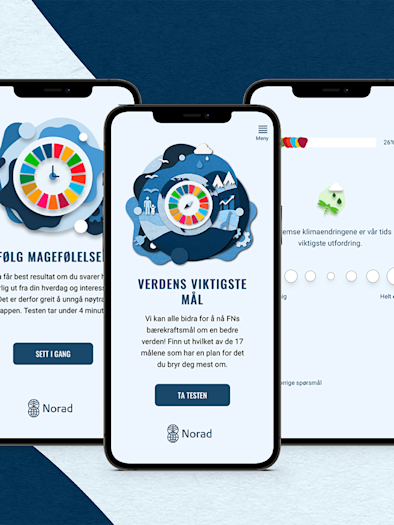
Insights+ The coronavirus outbreak – China intensifies national drive to contain the epidemic
It remains uncertain when the outbreak of COVID-19 – the official new name for the coronavirus – will eventually peak. But China’s continually expanding steps to contain the virus do appear to be proving effective.
Last Friday, Chinese health authorities reported that the number of newly confirmed cases in mainland China – outside Hubei province – had declined for 10 consecutive days. Earlier, Tedros Adhanom Ghebreyesus, the director-general of the World Health Organization (WHO), said that while the growth in cases had stabilized, it was critical to remain very cautious since the “outbreak could still go in any direction.”
This article provides an overview of the latest developments that companies should bear in mind – including the Chinese leadership’s evolving policy measures and appointment of new senior officials in Hubei province and Wuhan, the growing pressures on numerous sectors, the local media’s coverage of the epidemic, and deepening support from businesses for relief efforts.
As always, it concludes with key recommendations for management teams as they struggle to navigate the many risks presented during such difficult circumstances.
National agenda revolves around efforts to contain the epidemic
Managing the public health crisis is the overriding priority for China’s leadership; this means that containing the spread of COVID-19 now dominates the agenda for government agencies at all levels.
Last Friday, President Xi led a meeting of the Central Committee for Deepening Overall Reform where he called for strengthening the national management system for public health emergencies, emphasizing the importance of addressing shortcomings exposed by the current epidemic. He also stressed the important role to be played by digital technologies, such as artificial intelligence, big data, and cloud computing, in preventing and controlling such outbreaks. For instance, Chinese media have been reporting regularly on the deployment of high-tech solutions to help contain the virus – from disinfection robots in hospitals to drones spraying disinfectants at residential communities to a subway app launched by Beijing municipal authorities which allows local residents to quickly check passenger flows.
Earlier in the week, President Xi also presided over a meeting of the Politburo Standing Committee which focused on containing the epidemic as well as ensuring economic stability and shoring up growth. Alleviating the challenges faced by businesses was a top priority, particularly for small- and medium-sized companies hit hard by the epidemic; a series of planned policy measures were discussed, including launching more targeted tax cuts, intensifying efforts to maintain employment, providing support for accelerating the production of foreign trade-oriented businesses, and more.
New local leaders appointed in Hubei and Wuhan
China’s central leadership also recently replaced the top local officials at the epicenter of the outbreak. Ying Yong, formerly the mayor of Shanghai, was appointed as the Party secretary of Hubei; Wang Zhonglin, previously the Party chief of Jinan, the capital of Shandong province, became the senior official in Wuhan.
The shakeup sent a strong signal about the gravity which Beijing views the epidemic as well as its determination to show the public how seriously accountability is taken within the political system.
Vulnerable sectors under growing pressure
The epidemic is already affecting a multitude of sectors to varying degrees; the ultimate impact on businesses will of course depend on how long the COVID-19 outbreak lasts.
But many major companies have continued to release warnings about their next-quarter performances. Global supply chains remain highly vulnerable to further disruptions, with thousands of factories in the world’s largest exporter yet to reopen. This is creating rising difficulties for many countries around the world, especially those which are among the most deeply embedded in Chinese supply chains, such as Malaysia, Vietnam, and South Korea.
Vulnerable sectors under growing pressure
The epidemic is already affecting a multitude of sectors to varying degrees; the ultimate impact on businesses will of course depend on how long the COVID-19 outbreak lasts.
But many major companies have continued to release warnings about their next-quarter performances. Global supply chains remain highly vulnerable to further disruptions, with thousands of factories in the world’s largest exporter yet to reopen. This is creating rising difficulties for many countries around the world, especially those which are among the most deeply embedded in Chinese supply chains, such as Malaysia, Vietnam, and South Korea.
Travel and tourism also count among the sectors hit hardest. Many international airlines have scaled back or halted altogether their flights to and from China; the U.N.’s International Civil Aviation Organization (ICAO) projected that global airline revenues will drop by US$4 billion to US$5 billion in the first quarter of 2020.
The ongoing travel restrictions and flight reductions will have a deep impact on tourism – China ranks as the world’s leading contributor to global tourism numbers, with Chinese tourists making 150 million trips overseas in 2018. In the first quarter, the ICAO estimates that Japan and Thailand could lose US$1.29 billion and US$1.15 billion in tourism revenue, respectively, as a result of the abrupt fall in Chinese visitors.
And global luxury brands are particularly vulnerable. Chinese consumers are a huge force in the world’s US$300 billion luxury goods market, accounting for 35% of global spending as well as 90% of growth last year, according to a study by Bain & Company. The sector’s high exposure to China has meant that many fashion conglomerates continue to be heavily affected by the COVID-19 outbreak. Kering Group, the owner of Gucci, Balenciaga, and other premium brands, has closed dozens of stores in China as consumers remain at home, while Estée Lauder has shut down around two-thirds of its stores in the market. Last week, Italian apparel brand Moncler said the number of shoppers visiting its China stores had plunged by 80%.
The cruise industry has also been contending with numerous cases of passengers being quarantined on ships after ports refused to allow them to disembark due to fears about infections. Global media have covered such controversies heavily, including those of the “World Dream” in Hong Kong and the “Diamond Princess” off the coast of Japan. Many cruise ship operators have been forced to cancel some sailings to destinations across the Asia-Pacific region.
For the auto sector, carmakers saw their China sales drop 18% to 1.94 million in January as concerns about the epidemic intensified. Last Friday, the China Association of Automobile Manufacturers (CAAM) cautioned that new vehicle sales could fall by over 10% in the first half of 2020.
Energy is also among the sectors expected to be deeply affected. For instance, the COVID-2019 outbreak could significantly curb Chinese demand for liquefied natural gas (LNG) due to slowing economic activity at home; China has accounted for 40% of global growth in LNG demand over the last five years.
Epidemic overwhelmingly dominates Chinese media coverage
The COVID-19 outbreak remains front and center in virtually all reporting across China’s media landscape. In particular, there is strong demand among Chinese outlets for positive stories emphasizing how the country has rallied together and detailing the progress being made to bring the epidemic under control. For brands and businesses, this provides a critical opportunity to demonstrate their commitment to supporting China at a very difficult time.
Chinese state-run media have also focused on countering the misinformation that often accompanies global health crises. For instance, China Daily has published a series of articles looking to debunk online rumors related to the virus before they spread too far – such as correcting inaccurate information about whether avoiding using cash or wearing contact lenses can reduce the likelihood of contracting the disease.
Business community broadens support for relief efforts
Amid incredibly challenging circumstances, Chinese and foreign companies have continued to expand their contributions to help mitigate the global health crisis. H+K China is proud to see many of our clients among the countless brands and businesses which are providing urgently needed support. Recent examples include:
Shell China donated 2 million yuan to the Wuhan Charity Federation. In addition, the company also gave 30 tons of medicinal alcohol to local hospitals in Hubei province.
JD Health launched a new online platform to help ensure patients with chronic diseases continue to have access to their drug supply, as part of JD.com’s highly diversified efforts to provide assistance. The Chinese e-commerce giant also unveiled its National Fresh Produce Channel to help farmers in need of new sales channels for their products during the epidemic.
Microsoft announced a second round of donations– including both cash and technology support – which raised the company’s total contribution to 45.8 million yuan, including 4.78 million yuan donated by employees. These commitments are assisting frontline hospitals and medical workers as well as helping to alleviate the outbreak’s impact on businesses, students, educational institutions, and partners.
Tencent pledged an additional 1 billion yuan to set up an Anti-Epidemic Fund, following the earlier launch of the company’s 300 million yuan Outbreak Response Fund and 200 million yuan Developer Support Alliance Fund. The new fund will be dedicated to helping provide medical supplies and technological support, assisting the infected and their families, improving medical facilities, conducting R&D focused on alleviating the epidemic, and more.
Communications strategies – Key recommendations
Navigating the risks presented by a global health crisis such as the COVID-19 outbreak can prove incredibly challenging for brands and businesses, particularly from a communications perspective. Most importantly, they would be well-advised to embed the 3Cs of crisis communications – concern, control, and commitment – at the heart of their strategies.
What does this mean? Essentially, companies should shape their communications strategies to articulate the following to their business partners, other key stakeholders, consumers, and the media:
Concern:
express empathy for all those dealing with a very complex and difficult situation
Control:
indicate precisely what steps the company has taken at present to address the situation
Commitment:
demonstrate the company’s broader determination to help resolve the crisis over the longer term
And why is it so important for brands and businesses to take this to heart? Simply put, those which follow the 3Cs often emerge from times of crisis with stronger connections with their target audiences; those which fail to bear them in mind will likely see their relationships strained or even seriously jeopardized.
So putting the 3Cs into action is critical. To help do so, here are some specific recommendations for companies during this difficult time.
Internally:
Set up a core hub
Establish an internal team tasked with managing the company’s activities and communications in response to the health crisis;
Monitor daily all updates from Chinese authorities, the WHO, and other top health organizations
Follow closely how news is unfolding across both traditional and social media channels in today’s 24-hour news and digital media environment – in particular, don’t turn a blind eye to coverage and discussions taking place on China’s massive online platforms, such as WeChat and Weibo, which serve as hugely important sources of information for hundreds of millions of people.
Comply with government directives
Fully adhere to Chinese policies and follow official guidance with regards to business activities, such as the closure or resumption of operations;
Adapt the company’s 2020 business strategy for China accordingly.
Be transparent with employees
Provide timely and consistent updates on corporate policies vis-à-vis the epidemic;
Ensure staff understand that their safety and wellbeing is the company’s top priority;
Be clear about all safeguards and precautionary measures being taken on behalf of the workforce, such as flexible work arrangements and the provision of protective masks and gloves.
Externally:
Keep messaging simple and factual
Only cite official information from government or health entities in public communications to avoid the risk of being perceived as spreading misinformation.
Engage actively with key stakeholders
Maintain regular communications with business and government stakeholders about corporate policies and activities vis-à-vis the outbreak;
If carrying out temporary closures or other disruptions to normal operations, ensure they are fully aware of the company’s plans to ensure business continuity going forward.
Contribute to efforts to fight the outbreak
For major corporates, adopt a multi-phased, diversified approach to supporting efforts to tackle the health crisis;
Donate funds and/or leverage unique business capabilities to create innovative assistance programs that truly stand out
Ensure continued follow-up to initial relief initiatives rather than relying on just a one-off commitment;
For those making donations, release a succinct external announcement which provides the most pertinent details, such as the amount of funds committed, the recipient entities and key beneficiaries, and what the donation aims to achieve, including quote(s) from the executive leadership team (China, regional, and/or global);
Demonstrate how the company is having a meaningful impact without appearing opportunistic – communications surrounding donations and other supportive initiatives must show a high degree of restraint to avoid backfiring by creating perceptions of insincerity and undermining the company’s credibility as a good corporate citizen (i.e. avoid any marketing around the company’s products or services; if they are integral to fulfilling an initiative’s objectives, then make a very clear connection between these capabilities and efforts to resolve the health crisis).
If you have any questions, please do get in touch with us at GPABeijing@hkstrategies.com. We can provide more in-depth assessments about the latest developments – particularly in relation to your industries of interest – as well as support your company or organization in further developing both its internal and external communications strategies.








